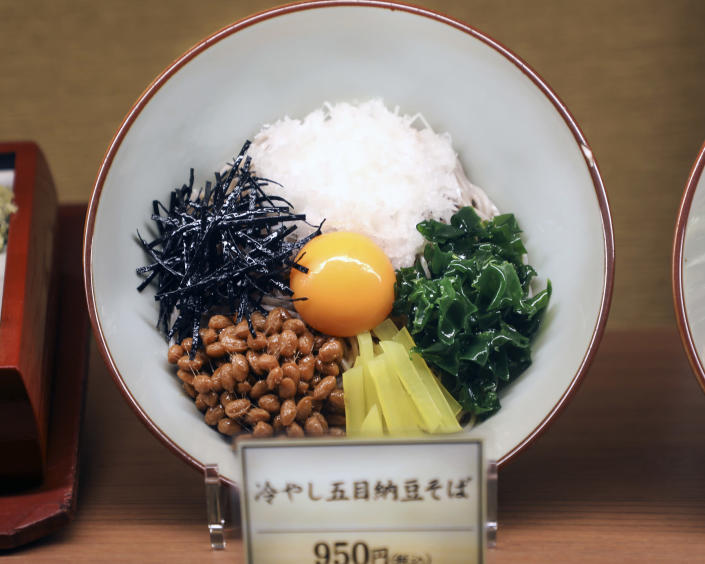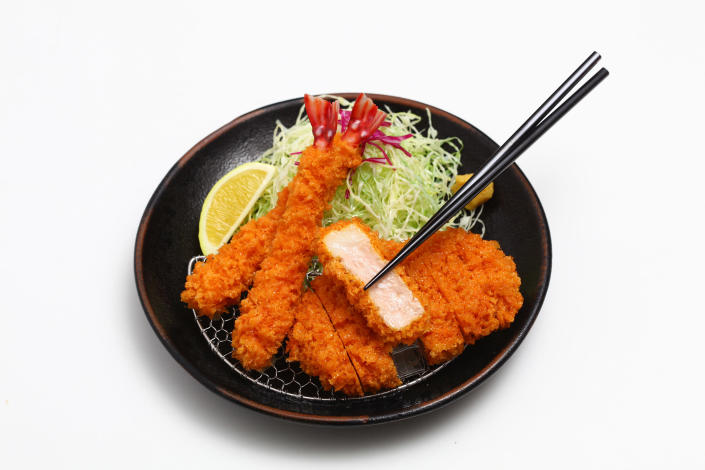The Japanese art of fake food
[ad_1]
Search, but never consume.
Which is the ideal way to take in the bountiful shows the likes of nigiri, curry and tempura shown in the home windows and at tables of so many informal dining Japanese dining places. Identified in Japan as “shokuhin sampuru” (食品サンプル), meals styles are typically produced of plastic or wax and emulate the look, texture and sort of foods. They ended up to start with utilised by dining establishments in the days before shade photography as a way to demonstrate individuals what products were being accessible on hand.

Today, their perform has developed into a lot more of an artwork type. In the streets of Japan and those people belonging to diasporic communities outside of the region, you’ll locate sampuru beckoning opportunity diners inside eateries and retailers. The fake and glistening delights also serve as vacation keepsakes as effectively as ephemera of time gone by.
Like the greatest of food items-similar innovations, numerous have laid claim to currently being the unique masterminds of food models.
In an interview with Today Food items, Samuel H. Yamashita, a professor of Background at Pomona School with abilities in Japanese and Pacific Rim cuisines, claimed the culinary background of sampuru has three distinctive origin theories.

“One idea is that they originated in Kyoto in 1917, and they had been invented by a male named Soujiro Nishio,” Yamashita described, including that the craftsman experienced been an staff of the Shimazu Corporation, a manufacturer that produced plant styles.

Nishio is said to have manufactured the to start with foodstuff designs in November 1917 and inevitably shaped Nishio Output Firm, which built the to start with foodstuff styles. According to legend, it was not till a division retail store in Okayama solicited Nishio for food items replicas that the versions really took off.
An additional concept credits Shirokiya Section Retailer, the very first Japanese office retail outlet to have a cafeteria that includes the waxy delights. The historical section shop dates as much again as 1662, but it was not right until over 200 several years later that exhibiting the goods on their menus would grow to be portion of the store’s marketing technique.

“They experienced the thought to exhibit a serving of every dish,” an article on sampuru printed by Tofugu, a Japanese culture and language blog site describes. “But real foods could bring in bugs and get sad-looking in other techniques by the conclusion of the working day, and building the food and throwing it absent every single working day wasn’t without the need of price.” With this dilemma, the division retail store tapped Tsutomu Sudo, an anatomical maker of human system sections and animals.

A third theory cites Takizo Iwasaki, a guy who ran a bento shop in Osaka, as turning out to be the very first sampuru maker. According to Yamashita, Iwasaki made bento lunches and, immediately after a little bit of demo and error, made a design of an omelet that was so realistic when he showed it to his spouse, she was not able to tell the fluffy egg dish from the real thing.
Acknowledged today as the “father of the fake meals model market,” Iwasaki’s enterprise — formerly the Iwasaki Group, now recognised as Iwasaki Be-I — is reported to account for 60% of present day Japanese sampuru marketplace.

Individuals very first models were being designed of wax, but today’s products are produced of plastic.
While the valuation of sampuru is large, most of its producers continue to mainly personalized-make the types by hand. The handcrafted procedure of the food stuff versions is a person of moment element and artisanship.
A restaurant soliciting replicas of its menu merchandise will commonly freeze their dishes so that a producer can start off the process of making a casting mold.
For its approach to constructing replica foodstuff, Iwasaki Be-I states on its web page that it follows a “not greatly known” stage-by-move approach. Starting with the creation of a mold manufactured by duplicating the tough surfaces of food items, the maker then little by little fills the mould with silicone and a colored resin. After heartening the product in an oven, the silicone is taken off from the model and then painted with airbrushes and paintbrushes.
It doesn’t end there, nevertheless. Immediately after all, the critical to any dish is presentation. Whether or not it’s how your side of fries will be put together with a burger stacked significant with toppings, or the lacquered appear of unagi about a bowl of rice, foods designs are established in a way to replicate how a dish will be served.

Further than whetting appetites, foodstuff types have also fostered cultural trade and growth all around the entire world.
In an job interview with Today, Seigo Kozakai, the CEO of Iwasaki Mokei (not to be baffled with Iwasaki Be-I) underlined the influence sampuru has experienced in aiding culinary expansion and collaboration around the globe. “Sampurus grew proportionally to the expansion and enhancement of Japanese places to eat,” Kozakai remarked. “After the 1940s, when Western foods tradition arrived to Japan, these sampurus gave visual reassurance to the Japanese men and women who experienced not observed several of these dishes before. Since then, it was regarded that sampurus were being productive and turned what is identified right now.”

Over and above broadening American palates, sampuru has played a major element in imparting an knowing of food stuff as an art sort in alone. A 1985 article released in the New York Moments described sampuru as an illustration of a “pure Tokyo type of common craftsmanship” that experienced fascinated the art planet so much that it was incorporated in an exhibition at London’s Victoria and Albert Museum. Just one anecdote from the piece recalled how a visitor at the museum experienced found a piece of fur on a plastic kiwi fruit the customer had taken as “quite real.” Yrs later on, by 1990, illustrations of the Japanese foods samples ended up component of a permanent collection at the Museum of Modern day Artwork in New York City. And the fascination with foods replicas as artwork proceeds. In mid-May, the Japan Household Los Angeles hosted Seigo Kozakai for a presentation on the craftsmanship and business enterprise of these foods replicas.

With its capacity to visually communicate the texture and flavor profile of meals, sampuru has extended served as an ambassador of new culinary encounters for individuals around the world. Right now, they give nonverbal children and people today the potential to talk their desires, provide travelers an chance to enterprise exterior of their cultural comforts, and — with their a lot of shows in window outlets — brighten the streets of our entire world.
[ad_2]
Resource url
